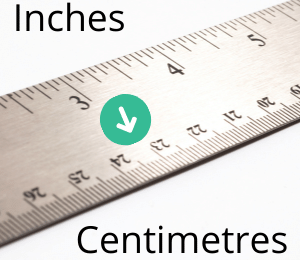The average speed of humans: As humans, we possess an innate curiosity about our abilities and limitations. One fascinating aspect that often piques our interest is our average speed. Whether walking, running, or engaging in various physical activities, understanding our average rate can provide insights into our capabilities and help us appreciate the remarkable range of velocities we can achieve. In this blog post, we delve into the average speed of humans, exploring different modes of locomotion and highlighting the factors that influence our rate.
Walking: Steady Strides:
Walking is one of the most fundamental forms of human locomotion. On average, humans walk at a speed of around 3 to 4 miles per hour (4.8 to 6.4 kilometers per hour). However, it’s important to note that the walking speed can vary greatly depending on age, fitness level, terrain, and individual gait patterns. Some people naturally walk faster or slower than the average pace.
Running: Swift Steps:
When we pick up the pace and transition from walking to running, our speed increases significantly. The average running speed varies among individuals, but most adults can maintain a jogging rate of approximately 6 to 8 miles per hour (9.7 to 12.9 kilometers per hour). Elite athletes can achieve even higher speeds, with world-class sprinters clocking in at over 25 miles per hour (40 kilometers per hour) during short bursts.
Cycling: Pedaling Power:
Cycling allows us to tap into the power of our leg muscles while minimizing the impact on our joints. The average speed for recreational cyclists ranges from 10 to 15 miles per hour (16 to 24 kilometers per hour). However, professional cyclists in races like the Tour de France can reach speeds exceeding 25 miles per hour (40 kilometers per hour) during challenging stages.
Swimming or Aquatic Agility:
Swimming offers a unique way to navigate through water and tap into our hydrodynamic potential. The average swim speed depends on various factors, including stroke technique, distance, and swimming style. A leisurely freestyle swim typically ranges between 1.5 to 2.5 miles per hour (2.4 to 4 kilometers per hour). Comparatively, competitive swimmers can achieve speeds exceeding 4 miles per hour (6.4 kilometers per hour) over short distances.
Other Factors Influencing Speed:
Besides the mode of locomotion, several factors can influence human speed. These include individual fitness levels, age, training, environmental conditions, and obstacles or inclines. Additionally, genetics can play a role, as some individuals may possess natural advantages, such as longer legs or greater muscle mass, contributing to higher speeds.
Determining the average speed of a human can provide valuable insights into our physical capabilities. However, it’s important to note that various factors, such as gender, height, individual gait patterns, and other physiological attributes, can influence an individual’s speed. Let’s explore the average rates of humans in different scenarios and how to calculate them.
Speed in numbers: Average speed of human
Average Running Speed:
On average, males have a running speed of approximately 13 km/h (8.1 mph), while females average around 10 km/h (6.2 mph). However, it’s crucial to remember that these figures are averages, and individual variations exist. Some females may outrun males, and vice versa, depending on their personal fitness levels and training.
Average Walking Speed:
The average speed of human walking typically ranges between 2.5 to 4 miles per hour (4 to 6.4 km/h). Again, age, fitness, and terrain can influence an individual’s walking speed. It’s worth noting that walking speed may vary for different purposes, such as strolls or brisk walks for exercise.
Other Factors Affecting Speed:
Various factors, including genetics, training, fitness level, and environmental conditions, influence the speed. Additionally, factors like height, stride length, and movement efficiency can contribute to differences in rate among individuals.
Calculation of Average Speed:
To calculate average speed, divide the total distance covered by the time taken. For example, if someone runs 5 kilometers in 30 minutes, the average rate would be 10 km/h. Similarly, for shorter distances, such as a 100-meter sprint, divide the distance by the time taken to get the speed in meters per second (m/s). Read Also:The Appeal of Classic Couture
Speed When Scared:
When individuals experience fear or a sudden adrenaline rush, their speed can increase significantly. In a typical scenario, the speed of a scared person might be equivalent to that of a 100-meter sprint. However, it’s essential to prioritize safety and caution in such situations.
Determining the average speed of a human running or walking gives us a general understanding of our physical capabilities.
Conclusion
Humans possess an incredible range of speeds, from leisurely walks to breathtaking sprints. Our average rate varies depending on the mode of locomotion, with walking, running, cycling, and swimming each offering unique velocities. However, it’s important to remember that averages can only provide a general overview as individual variations abound. Regardless of our speed, what truly matters is our ability to embrace and appreciate the incredible capabilities of our bodies. So, let’s lace up our shoes, dive into the water, or hop on our bicycles and enjoy the exhilarating sensation of movement at our own pace.
Frequently Asked Questions about the Average Speed of Human
What is the average running speed of a human?
On average, males tend to run at a speed of around 13 km/h (8.1 mph), while females average approximately 10 km/h (6.2 mph). However, individual variations exist based on fitness, training, and physiology.
What is the average walking speed of a human?
The average walking speed of a human typically ranges from 2.5 to 4 miles per hour (4 to 6.4 km/h). However, walking speed can vary depending on age, fitness level, and terrain.
Can females run faster than males?
Yes, some females can run faster than some males. The average speeds mentioned earlier are based on general trends, but individual variations exist due to fitness, training, and genetics.
How can I calculate my average speed while running or walking?
Divide the total distance by the time taken to calculate your average speed. For example, if you run 5 kilometers in 30 minutes, your average speed would be 10 km/h. Similarly, divide the distance by the time taken to obtain the speed in meters per second (m/s) for shorter distances.
What factors influence human speed?
Several factors influence human speed, including gender, height, fitness level, individual gait patterns, stride length, training, and environmental conditions. Genetics can also play a role in determining an individual’s speed potential.
How fast can humans run when scared?
When individuals experience fear or an adrenaline rush, their speed can increase significantly. In general, the speed of a scared person might be equivalent to that of a 100-meter sprint. However, it is essential to prioritize safety and exercise caution in such situations.
Can speed be improved through training?
Yes, speed can be improved through regular training and specific exercises focusing on building strength, and endurance, and improving running technique. Consistent training, including interval and speed drills, can help individuals increase their maximum speed and overall running efficiency.
Does age affect average speed?
Age can influence average speed to some extent. Generally, younger individuals may have faster speeds due to higher energy levels and physical fitness. However, older individuals who maintain good health and exercise regularly can still maintain respectable speeds.
How does terrain affect speed?
Terrain can significantly impact speed. Uphill surfaces slow down runners, while downhill surfaces may increase the rate. Uneven or slippery surfaces require additional caution and can affect the overall pace.




